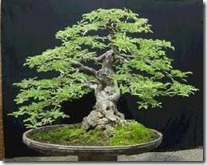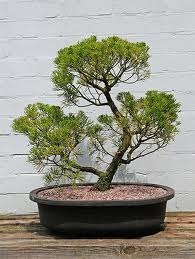 As bonsai plants are a perplexing blend of frailness and strength, proper maintenance involves time, effort and correct understanding of their natures. Though bonsais usually have lifespans longer than humans, their constitutions are so subtle that a mere overwatering, underwatering or improper methods of watering might lead to their drying up, withering and dying. Watering and pruning bonsai plants are two tricky jobs faced by nurturers. Though tough to be carried out, if performed properly, the process of taking care of such plants can indeed be fun.
As bonsai plants are a perplexing blend of frailness and strength, proper maintenance involves time, effort and correct understanding of their natures. Though bonsais usually have lifespans longer than humans, their constitutions are so subtle that a mere overwatering, underwatering or improper methods of watering might lead to their drying up, withering and dying. Watering and pruning bonsai plants are two tricky jobs faced by nurturers. Though tough to be carried out, if performed properly, the process of taking care of such plants can indeed be fun.
- The width and depth of the ideal pot for a bonsai would be respectively close to three-quarters and one-half the height of the tree, while the pot’s height should be approximately equal to the trunk’s diameter. If you are repotting a plant, extra care facilitates the best nutrition. Make sure the soil remains moist, but not too soggy as roots might rot in such soil. Apply some moss on the top layer and add natural fertilizers, like manure tea, seaweed, and emulsions of fish. A tip for the more creative gardener would be to decide whether the bonsai is a male or female, depending on its looks. In such cases, keep in mind, that pots of dark colors, angular shapes and designs are best for masculine plants. Those with lighter colors and rounded contours suit feminine plants best.
Watering a Bonsai
- Watering a bonsai tree is of utmost importance. Except for flowering bonsai, water any pot three times, even if it is raining, leaving enough water for the pot and soil, before the tree can take in the requisite quantity. Do not merely water the soil. Take care to water the entire body of the plant, as all parts soak in water to an extent. This helps in keeping the leaves and barks clean, such that dust and polluting particles can be avoided, leaving the breathing holes of the plant unclogged. In case you are using a hose to water your bonsai, get an adjustable nozzle to regulate the force of your spray to avoid too much pressure forcing soil out of the pot. Try to water early in the morning and get into a routine of immersing the entire pot in water once a fortnight, or 14 days.
Pruning a Bonsai
- While pruning a bonsai, you have to be careful. Do not go on a pruning spree, prune only when you have to get rid of cluttered branches and when you need to redirect growth. Once you have done preliminary pruning, wait for a week or two for some bounceback effect.
Giving the Bonsai a Vacation
- Though bonsai plants do not shed leaves like deciduous trees in winter, it does not mean they are evergreen. They are merely resting, which is when they need to do little photosynthesizing and use up most of their energy in sending all their sugars to the roots. So, you need to let them rest. The best way to do this, in case you are in a mild climate, is to leave the bonsai outdoors. In case you are in a cold climate zone, put a covering on them. You could also take the plant out of the pot in early fall and replant them in soil over slate in order to avoid deep rooting. Otherwise, you could also dig out 2- to 3-inch-deep sun pits or holes, with some greenhouse structure on top. The best places to give them the right atmosphere for resting would be any unheated room, garage or porch area, where you can keep them at about 50 degrees Fahrenheit for two or three months. Keep an eye out for watering the plants when the soil goes dry. Taking action against rodent attacks should also be taken seriously during this time.

Deprecated: strpos(): Passing null to parameter #1 ($haystack) of type string is deprecated in /home/agriviek8Qv/agriviet.net/public_html/wp-includes/comment-template.php on line 2522